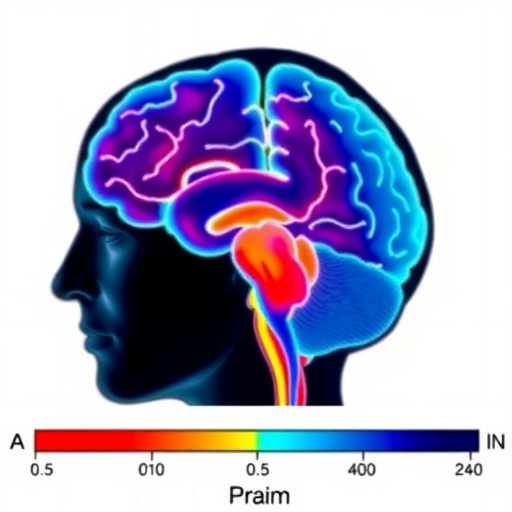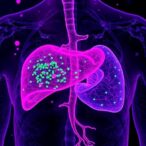
In a groundbreaking study recently published in npj Parkinson’s Disease, researchers have illuminated the complex interplay between synaptic plasticity and early structural brain changes in the context of premotor Parkinsonism. This investigation, spearheaded by Merino-Galán, Zamarbide, Belloso-Iguerategui, and colleagues, sheds unprecedented light on how resilience mechanisms within the striatum—a critical brain region involved in motor control—may sustain neural function despite the onset of neurodegenerative pathology well before classical motor symptoms appear. This insight not only broadens our understanding of Parkinson’s disease progression but also opens new avenues for early therapeutic interventions aimed at preserving synaptic integrity.
Parkinson’s disease (PD) is characterized primarily by the degeneration of dopaminergic neurons in the substantia nigra pars compacta, leading to hallmark motor symptoms such as bradykinesia, rigidity, and tremor. However, these symptoms manifest only after significant neuronal loss has occurred, underscoring the importance of studying the premotor phase where subtle cellular and circuit-level alterations begin. The striatum, as the main input nucleus of the basal ganglia, plays a pivotal role in integrating cortical and dopaminergic signals to regulate movement. Therefore, deciphering synaptic modifications in this region during early disease stages is crucial for elucidating the pathophysiology of PD and identifying biomarkers predictive of clinical onset.
The authors deployed a sophisticated combination of electrophysiological assessments, high-resolution imaging, and molecular analyses to interrogate the dynamics of striatal synaptic plasticity in experimental models of premotor Parkinsonism. Synaptic plasticity—the capacity of synapses to strengthen or weaken over time—underlies learning, memory, and adaptive motor control. In PD, disruptions to synaptic plasticity could contribute to the eventual failure of basal ganglia circuits. Yet, the resilience of these synaptic processes during incipient disease and their relationship to structural neuronal changes remained poorly understood prior to this work.
.adsslot_HOqxjhr8Zg{ width:728px !important; height:90px !important; }
@media (max-width:1199px) { .adsslot_HOqxjhr8Zg{ width:468px !important; height:60px !important; } }
@media (max-width:767px) { .adsslot_HOqxjhr8Zg{ width:320px !important; height:50px !important; } }
ADVERTISEMENT
Surprisingly, the study reveals that striatal synaptic plasticity exhibits a remarkable degree of resilience in the face of early structural adaptations associated with PD pathology. While dendritic spine density and architecture—structural correlates of synaptic strength—undergo initial alterations, the functional capacity for long-term potentiation and depression within striatal synapses persists. This indicates an intrinsic robustness in the striatal network, enabling it to compensate or delay functional deficits despite ongoing cellular remodeling at the neuroanatomical level.
This finding challenges the prevailing dogma that structural synaptic changes inexorably lead to functional impairments in neurodegenerative disorders. Instead, it suggests a decoupling between morphology and function during the premotor stages of Parkinsonism, with preserved synaptic plasticity potentially acting as a neuroprotective mechanism. Understanding the molecular underpinnings of this resilience could help identify novel therapeutic targets that bolster synaptic health, thereby modifying disease trajectory before irreversible neuronal loss occurs.
The investigators further explored potential signaling pathways mediating this synaptic robustness. Their data implicate alterations in dopamine receptor sensitivity and downstream intracellular cascades, including cyclic AMP response element-binding protein (CREB) phosphorylation and modulation of glutamatergic receptor trafficking. These molecular adaptations appear to sustain synaptic potentiation despite the diminished dopaminergic input characteristic of early-stage PD. Such compensatory mechanisms are likely critical for maintaining motor and cognitive function during the prodromal phase.
Moreover, the research employed longitudinal analyses to track the temporal progression of synaptic and structural changes in vivo, enabling a dynamic view of how neural circuits evolve during premotor Parkinsonism. The persistence of synaptic plasticity coincided with subtle but progressive spine remodeling and alterations in intrinsic neuronal excitability, suggesting that the striatum undergoes a phase of functional adaptation before eventual decompensation. These insights underscore the pliability of neural circuits during early neurodegeneration and emphasize the importance of timely intervention.
Importantly, this study also highlights the heterogeneity of synaptic responses within distinct striatal neuron subtypes. Medium spiny neurons (MSNs), the principal neurons of the striatum, exhibited subtype-specific differences in plasticity resilience and structural remodeling, reflecting their varied dopaminergic receptor expression profiles and connectivity. This nuanced understanding of cell-type-specific vulnerability enhances our ability to design targeted therapies that preserve functional neuronal populations selectively.
From a translational perspective, the findings offer optimism for developing biomarkers based on synaptic function that could detect PD risk prior to motor symptom emergence. Techniques such as advanced neuroimaging or electrophysiological recording of basal ganglia circuits might capture these early plasticity alterations, facilitating earlier diagnosis and personalized intervention strategies. Additionally, pharmacological agents or neuromodulation approaches aimed at amplifying synaptic resilience mechanisms represent promising therapeutic frontiers.
The study’s use of multidisciplinary methodologies exemplifies the power of integrated neuroscience research in unraveling complex disease mechanisms. By combining structural imaging with functional assays and molecular biology, the team constructed a comprehensive model of early Parkinsonian synaptic dynamics that bridges microscopic changes to system-level functional outcomes. Such integrative approaches are essential for advancing precision medicine in neurodegenerative disorders.
Furthermore, these results raise compelling questions about whether similar synaptic resilience phenomena occur in other neurodegenerative diseases characterized by early synaptic dysfunction, such as Alzheimer’s disease or Huntington’s disease. Comparative studies may uncover universal plasticity-based protective processes or reveal disease-specific adaptations, informing cross-pathology therapeutic development.
This research also underscores the critical importance of timing in therapeutic strategies against Parkinson’s disease. Interventions that fortify synaptic plasticity and prevent maladaptive structural changes during the premotor period could delay or even halt motor symptom progression. This approach contrasts with current treatments that primarily address symptoms rather than underlying disease mechanisms, marking a paradigm shift toward neuroprotection and disease modification.
In conclusion, the study by Merino-Galán, Zamarbide, Belloso-Iguerategui, et al., provides a transformative perspective on early Parkinson’s disease pathology, emphasizing the resilience of striatal synaptic plasticity amidst early structural neuronal changes. This resilience has profound implications for understanding the brain’s capacity to adapt and maintain function in the face of neurodegenerative insult. Future research inspired by these findings will no doubt accelerate the development of early diagnostic tools and innovative therapies that target synaptic preservation, ultimately improving outcomes for individuals at risk of Parkinson’s disease.
As the scientific community continues to dissect the intricate dance between structure and function in neurodegenerative diseases, this work stands as a landmark achievement, reminding us that the brain’s capacity for adaptation may hold the key to unlocking new horizons in combatting Parkinson’s and perhaps other disorders marked by synaptic failure.
Subject of Research: Resilience of striatal synaptic plasticity amid early structural changes in premotor Parkinsonism.
Article Title: Resilience of striatal synaptic plasticity over early structural adaptations in premotor parkinsonism.
Article References:
Merino-Galán, L., Zamarbide, M., Belloso-Iguerategui, A. et al. Resilience of striatal synaptic plasticity over early structural adaptations in premotor parkinsonism. npj Parkinsons Dis. 11, 146 (2025). https://doi.org/10.1038/s41531-025-00994-1
Image Credits: AI Generated
Tags: biomarkers for Parkinson’s disease onsetcellular alterations in early Parkinson’sdopaminergic neuron degenerationearly premotor Parkinsonism researchmotor control and basal ganglia functionneurodegenerative pathology and synaptic integrity.Parkinson’s disease progression insightsresilience mechanisms in the striatumStriatal plasticity in Parkinson’s diseasestructural brain changes in Parkinson’ssynaptic plasticity and neurodegenerationtherapeutic interventions for Parkinson’s disease



